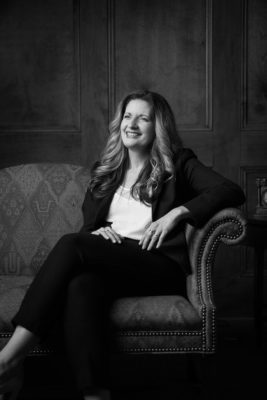New York District Court Vacates Key FFCRA Regulations
When the Final Rule for the Family First Coronavirus Response Act (FFRCA) was issued on April 6, 2020, the Department of Labor (DOL) included one notable surprise: its expansive definition of the “health care provider” employees who could be excluded from receiving paid leave benefits under the Emergency Paid Sick Leave Act (EPSLA) and the Emergency Family Medical Leave Expansion Act (EFMLEA), the paid leave components of the new law. Under the Final Rule’s definition, “a health care provider is anyone employed at any doctor’s office, hospital, health care center, clinic, post-secondary educational institution offering health care instruction, medical school, local health department or agency, nursing facility, retirement facility, nursing home, home health care provider, any facility that performs laboratory or medical testing, pharmacy, or any similar institution, Employer, or entity.” 29 C.F.R. § 826.30(c). By focusing this definition on where the individual worked and not what work tasks the individual performed, the Final Rule allowed certain employers to be wholly exempt from providing the newly enacted paid leave benefits.
For healthcare industry employers, this result seemed almost too good to be true. And if a decision from a U.S. District Court in the Southern District of New York stands, the too-good-to-be-true result will no longer be true.
On August 3, 2020, a federal district court in New York vacated several key provisions of the DOL’s Final Rule implementing the EPSLA and the EFMLEA, in a cases styled New York v. U.S. Dept. of Labor, No. 20-CV-3020 (JPO), (S.D.N.Y.). One provision vacated was the DOL’s expansive definition of “health care provider” for purposes of identifying employees that could be excluded from receiving paid leave. The New York district court took issue with definition’s focus on the identity of the employer rather than the employee, The court found the statutory text required an employee-focused definition—a determination that the employee subject to exclusion was capable of furnishing healthcare services. The district court noted that the Final Rule’s definition encompassed all employees of certain employers, without regard to the job duties of the employees. For example, under the Final Rule, all individuals employed at a hospital were subject to exclusion from paid leave benefits, including administrative, clerical, facility maintenance, and other non-clinical workers. The district court found the DOL exceeded its authority in issuing an employer-focused definition, which “includes employees whose roles bear no nexus whatsoever to the provision of healthcare services, except for the identity of their employers, and who are not even arguably necessary or relevant to the healthcare system’s vitality.”
The New York district court also vacated the “work-availability” requirement included in the DOL’s Final Rule, which interpreted the statute to impose “but for” causation relative to an employee’s need for leave. The EPSLA and EFMLEA grant leave to employees who are “unable to work (or telework) due to a need for leave” for certain COVID-19 qualifying reasons. Soon after the FFRCA was enacted, FAQs published by the DOL clarified that employees would not be eligible for the statute’s paid leave benefits if the employees were furloughed or temporarily laid off due to a shutdown of their employers’ businesses. Likewise, under the DOL’s Final Rule, employees are not eligible for paid leave benefits where the employers do not have work for the employees; in that situation, the “need for leave” would not be due to a COVID-19 qualifying reason under the statute. Applying rules of statutory construction, the New York district court vacated this “work-availability” requirement of the Final Rule, reasoning that the statutory text was ambiguous as to whether it requires “but-for” causation in all cases for leave eligibility and that the Final Rule did not sufficiently state the DOL’s basis for interpreting the statute to require “but-for” causation.
The New York district court vacated two other Final Rule provisions. Those vacated provisions relate to an employer’s consent to intermittent leave and the timeframe for an employee to submit required documentation to support the need for leave.
The New York district court did not address whether its decision applied outside of its jurisdiction. The DOL will most likely appeal this decision, which should stay the district court’s order and maintain the status quo relative to the four Final Rule provisions at issue. However, the decision could lead to other states bringing similar actions.
Most healthcare employers have elected to exclude all employees under the current Final Rule definition of “health care provider.” If that definition is invalidated, there will be a significant impact on those employers, particularly on community hospitals and other public entities that are not eligible for the payroll tax credits for benefits paid under the EPSLA and the EFMLEA. For those public employers, these paid leave benefits will not be “zero cost” as they are designed to be for private employers who can take advantage of the tax credits.
If the “work-availability” provisions of the current Final Rule are invalidated altogether, employers will likely face tough decisions in the event there are new “safer-at-home” orders in the fall that require businesses to shut down. Faced with this situation in the spring, many employers sent their employees home for lack of work but did not terminate the employees and continued to provide health insurance benefits. Those employers may be forced to terminate the employment relationship in this situation going forward, based on the potential costs of providing EPSLA and EFMLEA paid leave to the furloughed employees.
For now, Mississippi employers may continue to rely on the provisions of the DOL’s Final Rule in complying with the FFCRA. We will be tracking the decision from the New York district court, so we can help employers take quick action if needed to comply with any changes in the law.

